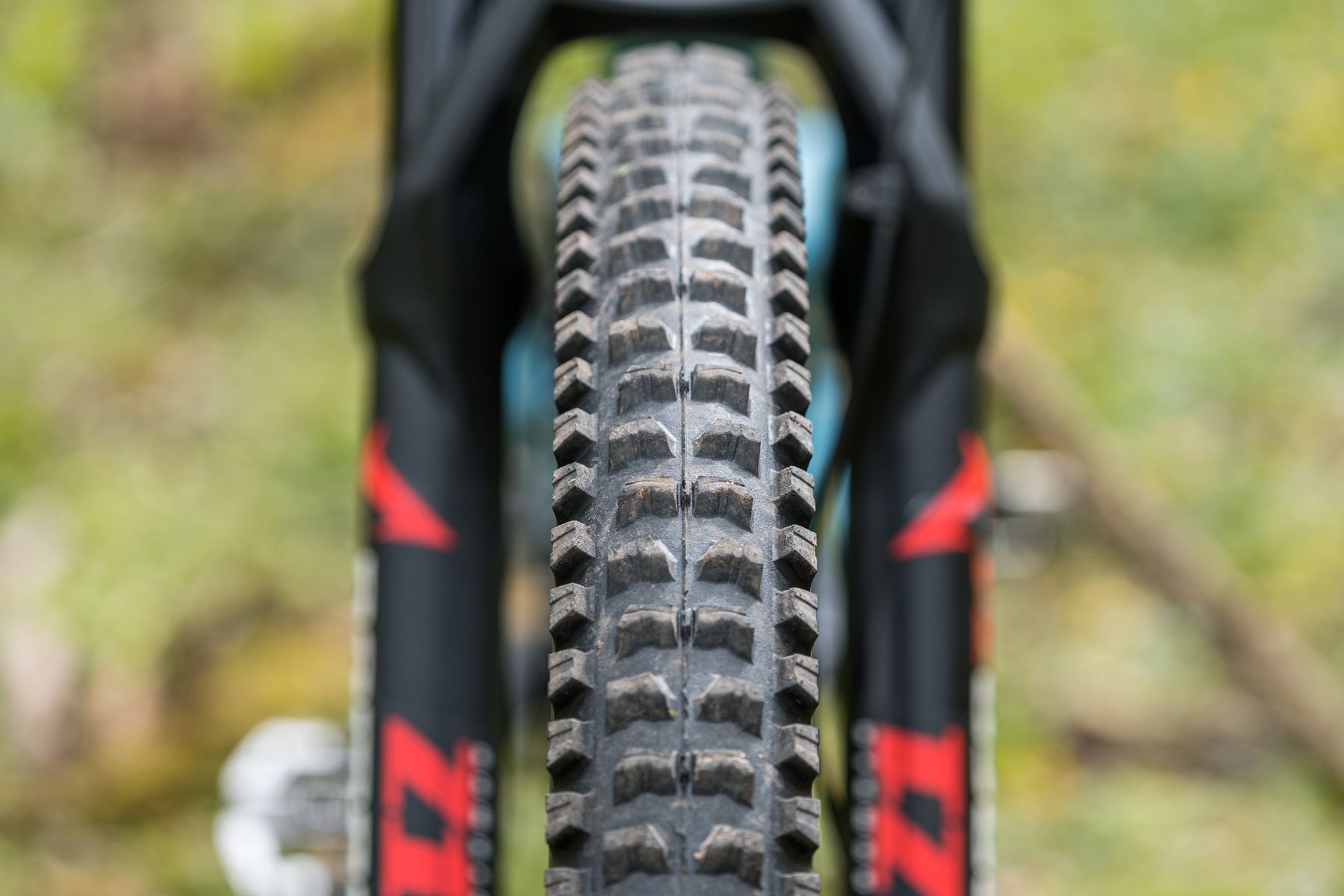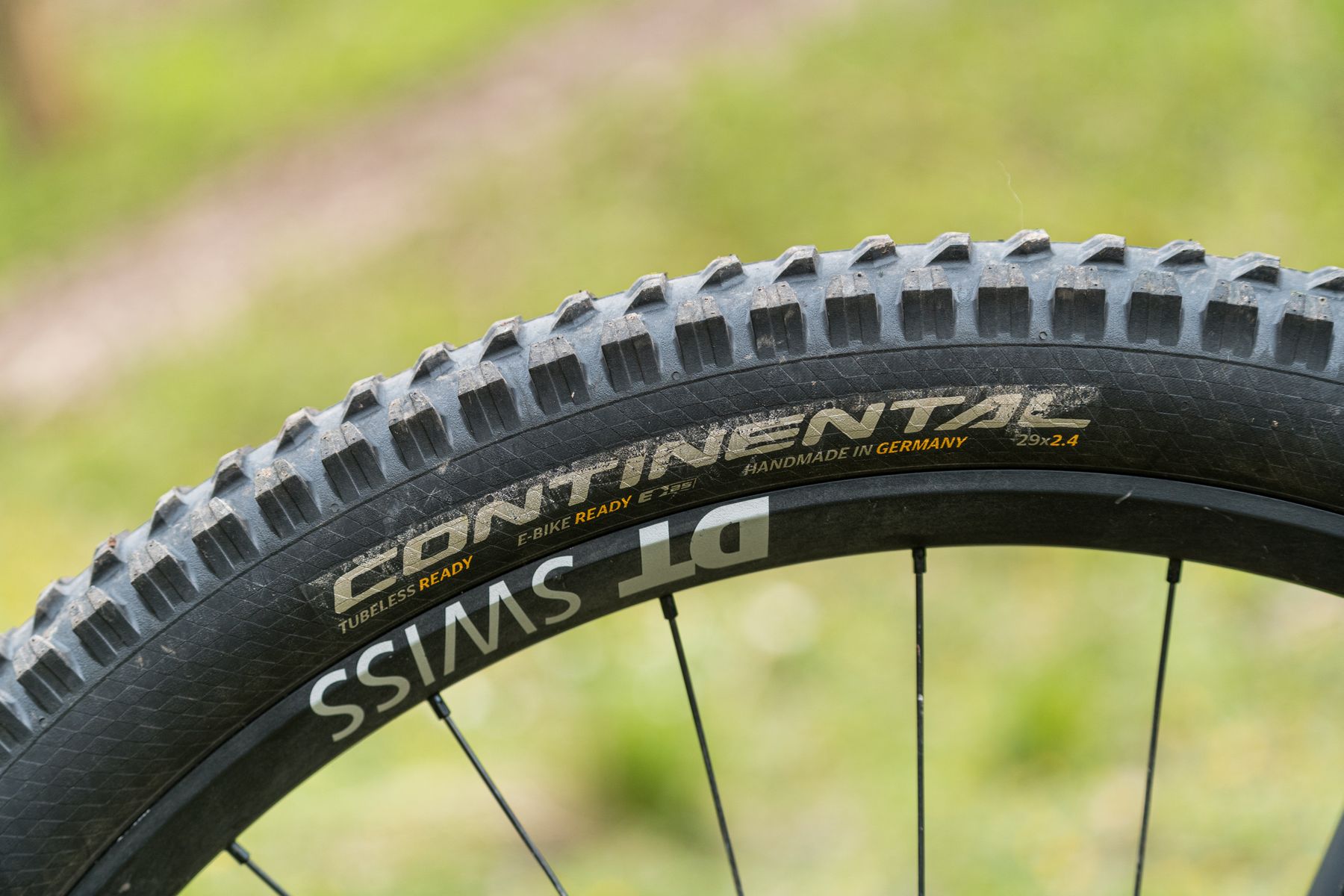James Vincent tests the Continental Kaiser on the knob ripping rocks of the Lake District. Find out how they performed in this review.
- Brand: Continental
- Product: Kaiser Protection Apex
- From: www.conti-tyres.co.uk
- Price: £64.99
- Weight: 1050g
- Tested: by James Vincent for 4 months

Intro
The Kaiser has been a mainstay of the Continental Enduro range for aeons now, and I originally tested a set back in 2017, in 27.5in size. Since then, Continental has revamped its entire range, including the Kaiser, which has seen a few subtle but key updates. The tread pattern remains the same, but pretty much everything else on the tyre has been improved.

Design
The tyre features heavily ramped and shaped central knobs, paired with prominent shoulder knobs, and compared to some other manufacturers, the knobs have less aggressive siping. Instead, the Kaiser relies on the Black Chili compound and a new softer casing to work together and conform to the terrain.
Speaking to Rob Scullion from the UK importer, he tells me Continental has changed the weave angle on the carcass threads, to make the casing more supple (a steeper weave angle makes for a stiffer casing, a shallower weave is more compliant). The Apex sidewall protection is now taller and tapered – it used to finish rather abruptly, whereas now it works in unison with the rest of the casing. The bead has also been improved for easier tubeless installation (not that I had a particular issue with inflating them previously).
As for the rubber itself, the recipe of Continental’s Black Chili compound is constantly being tweaked and refined for optimal grip and wear, and Continental still has no interest in measuring or releasing any of their tyre’s durometer rating. The finer details of this compound are a closely guarded trade secret, and even during my factory visit, Continental remained tight lipped. They’ve struck upon a winning formula, and the compound is nice and sticky for good grip, but it doesn’t seem to wear as quickly as other soft compound tyres.
Because of their confidence in the compound, you get a choice of 3 diameters (26″ fans rejoice) or there’s a wire beaded, downhill casing available. What you don’t get is a bewildering array of casings and compounds that could lead to potential confusion.

The Ride
Compared to the previous version of the tyre, the changes add up to a casing that is immediately noticeably softer. Whereas the previous Kaiser would comfortably stand up off the rim under its own weight, the new Kaiser is much more supple and won’t do that. This translates to a nicer, softer feel when riding, and improved grip all round. I found the performance to be very predictable – if the tyres are going to break away they’ll let you know and give you time to react, unlike others which can snap away without any warning.

Grip on rock (both dry and wet) is very good. In fact, on Lakes rock, the Kaiser is as good as any tyre I’ve ridden, with climbing traction being particularly impressive. If you can keep the pedals turning, it’ll winch you up most things, and if you need any further proof of the tyres capabilities on rock, just check out Danny MacAskill’s recent video The Slabs, and take a close look at what tyres he’s running.
When things get wetter and looser, thanks to the heavily sloped central knobs, the Kaiser doesn’t have the outright straight line grip of, say, a Maxxis DHR. Instead, it likes to keep rolling, and if you can manage to do so then it behaves very well indeed. I did originally request a Baron to go up front, but thanks to the vagaries of Brexit and Covid they’re proving hard if not impossible to come by, so I had to resort to the Kaiser front and rear.
Wear and protection
Tread wear has generally been good, with both front and rear tyres having plenty of life left in them. The sidewalls are looking decidedly scuffed and battered (the joys of riding on rocks I guess) but they’re still working well. The side knobs are still going strong too – unlike other brands, they’re all still present and correct and haven’t decided to jump ship just yet. There are one or two small cuts in the top surface of the tyre, but I’ve suffered no loss of pressure over the course of the test.
A small caveat
I’m fully sold on the benefits of CushCore, especially riding somewhere as tough on tyres as the Lake District. As such, I had CushCore Pro inserts installed for the majority of my testing, but I made sure to test the tyres without them on a few rides for balance. With the inserts, I was able to drop pressures as low as 12psi up front on a particularly slimey day in the woods, while I normally ran between 18-20psi up front, and around 25psi at the back. Without the inserts, I topped the pressures up to 24 and 28psi front and rear.

Final thoughts
I’ve really enjoyed riding the Continental Kaisers, with the small but significant improvements over the previous versions working well. For the predominantly hardpack and rocky riding I tend to do, they’re really very good indeed. In slightly muddier conditions, a tyre with a bit more bite would be beneficial up front, but as we head towards the summer months and hopefully drier conditions I’m sorely tempted to leave them on until the autumn.
Join our mailing list to receive Singletrack editorial wisdom directly in your inbox.
Each newsletter is headed up by an exclusive editorial from our team and includes stories and news you don’t want to miss.









Danny rode super sticky prototypes in the Slabs video. Not tried the new Kaisers, but liked the previous version even if it felt a little wooden sometimes.
Yes, I’d heard that Danny got some super sticky prototypes for the slab. Also pretty sure that the Athertons run the Kaisers on their trail/enduro bikes.
And yes – the casing made the previous model feel a bit dead. That’s been eliminated now and the tyre is all the better for it. Just look out for the ebike logo to make sure you’re getting the newer model